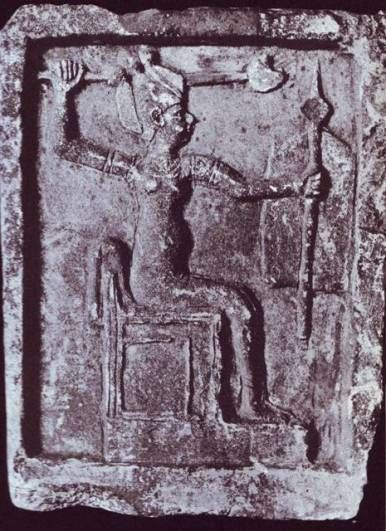In Ancient Greece, the heliacal rising and setting of Pleiades, whose ancient Greek name "Πλειαδες" comes from πλεω, which means “to sail”), was used as a calendar marker for the beginning and the end of the sailing season...
Heliacal rising and setting of Pleiades marks (roughly) the beginning and the end of the "good sailing winds" season. Winds caused by the sun, heating up the Eastern Mediterranean, and creating an updrift, which sucks the cooler air from Europe to start streaming southward...
I talked about this first in my article "Trojan horse", in which I asked a question: was Trojan horse "hypos" - a wooden horse left as tribute, or "hypos" - a wooden boat with a horse head used for transporting tributes...
In this article I also explained the link between Eastern Mediterranean Sea gods and horses: The start of the horse mating season marks the start of the sailing season in the Eastern Mediterranean...
For those interested, I also talked about the Etesian winds in my article "Three sacrifices" about human sacrifices made "for good winds" at the beginning and the end of the Trojan war. And about animal and plant calendar markers from the description of these sacrifices, that can help us determine when the Trojan war started and ended...
And I also talked about the Etesian winds, in my article "Anat" about this Semitic "warrior" goddess worshipped by the Canaanites & Egyptians during the Bronze and Iron Ages...
Anyway, after a while I wrote this article, "Demeter with dove", in which I explained why Dove was sacred to Demeter. The reason for that is that nesting season of doves overlaps with the grain harvest season...
After that I wrote this article, "Pleiades", in which I explained this strange Greek legend about the origin of the Pleiades constellation.
According to the Greek mythology, the Pleiades are the seven daughters of Atlas
whom Zeus transformed first into doves
and then into stars...
Why first into doves and then into stars? Animal calendar markers of course...
And in it I also wrote that the Heliacal "Rising" and "Falling" of pleiades divided Greek year into two halves: grain growing agriculture season (Oct/Nov-Apr/May) and sailing season (Apr/May-Oct/Nov)...Kind of important...
Oct/Nov being the time when grain sowing season started and Apr/May being the time when grain harvest season started.
And Apr/May being the time when sailing season started and Oct/Nov being the time when the sailing season ended.
And then last week I wrote this article, "Poseidon pursuing Demeter", in which I explained the meaning of the strange legend about Poseidon as a stallion eloping with Demeter as a mare...
Poseidon pursuing a woman, 480-450BC. Currently in the Metropolitan Museum of Art, Manhattan NY...
Could this unidentified "woman" actually be Demeter?
And in it I pointed that horse is an (animal) calendar marker which links the beginning of the grain harvest (Demeter) season and sailing (Poseidon) season...
It just occurred to me today that doves/pleiades is another (animal) calendar marker that links beginning of the grain harvest (Demeter) season and sailing (Poseidon) season...














No comments:
Post a Comment